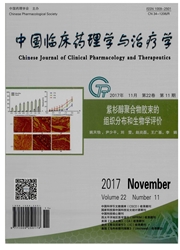

 中文摘要:
中文摘要:
在所有参与药物生物转化的器官中,肝脏是最主要的场所。药物在肝脏或者肝外的代谢是药物消除的一种主要方式。由于药物在肝脏的代谢直接与其药理活性和毒性特征相关,进而影响药物在临床上的安全性和有效性,因此药物在肝脏的代谢是临床前新药研发过程中的一个非常重要的环节。近年来,相对于整体模型来说,体外研究模型以其快速、准确、高通量的优势在药物的肝脏生物转化研究中被药物研发的科学工作者广泛使用。目前常用的体外研究模型包括重组酶、微粒体、胞质溶胶、肝脏S9(S9)、细胞株、转基因细胞株、原代肝细胞、干细胞诱导分化的肝细胞、精密肝切片和肝脏灌流。笔者将对这些方法进行详细的概述,并对各自的优缺点进行比较并阐述其具体应用方向,方便研究人员选择合适可行的代谢模型,研究药物在肝脏中可能的生物转化模式,最终对药物在人体内的消除方式作出科学的预测。
 英文摘要:
英文摘要:
The liver is the predominant organ participating metabolism of xenobiotics.Generally,drugs will be mainly eliminated from the body by the way of metabolism.Drug biotransformation is one of the most important events that affect the overall pharmacologic and toxic profile and the subsequent therapeutic and safety index.Hence,hepatic metabolism research is a key step in the preclinical drug discovery and development process.For this purpose,in vitro approaches using various hepatic metabolism models,with the merits of rapidness,accuracy,high throughput have been gaining increasing popularity in the academic and pharmaceutical fields.The presently used in vitro models includes recombinant enzymes,microsomes,cytosol,S9 fraction,cell lines,transgenic cell lines,primary hepatocytes,stem cell derived hepatic cell,precise liver slices and perfused liver.This review will describe the advantages,disadvantages and the applications of these in vitro models with the purpose of facilitating researchers to choose appropriate models to make reasonable evaluation of in vitro metablism and study the possible drug biotransformation model in liver,and finally to predict drug elimination mode in vivo scientifically.
 同期刊论文项目
同期刊论文项目
 同项目期刊论文
同项目期刊论文
 期刊信息
期刊信息
